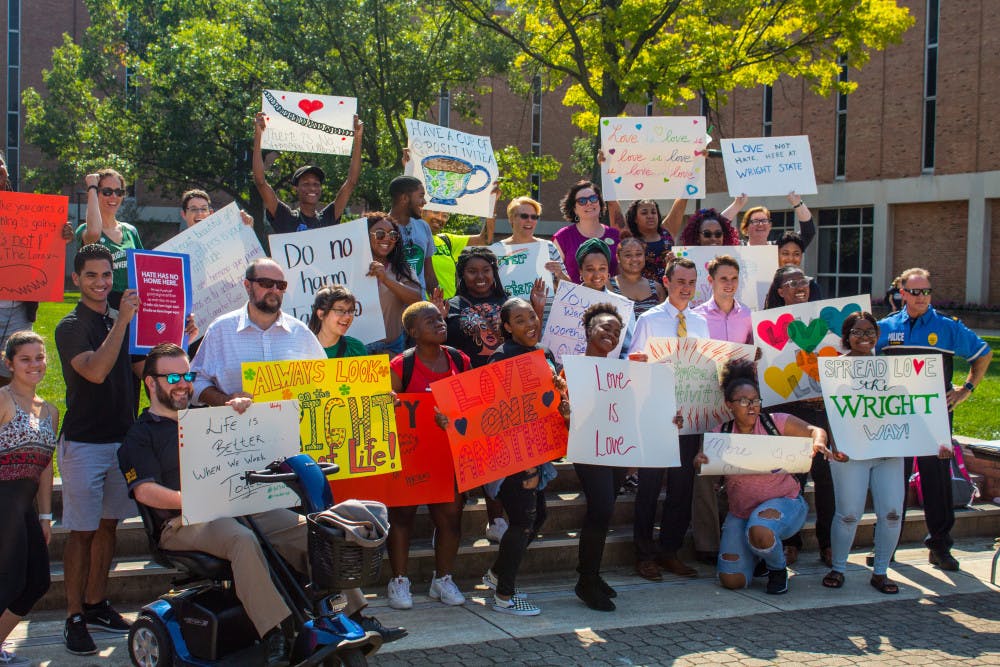
At 12pm on Sept. 21, a group of people gathered in front of Millett Hall. Some of them held posters containing slogans about equality, others broke off into smaller groups. A couple of staff members joined and mingled with the participants. For a short while, age, gender, race or ethnicity didn’t matter; these were people who just wanted to connect with others. That was the aim of this year’s Unity Walk, hosted by Wright State’s chapter of NAACP.
Asia Miller, president of the NAACP, said the Unity Walk was an idea she had last year.
“I’ve been wanting to do something to bring together different groups on campus for years, so I just thought lets have 'a walk'," Miller said. "I mean, it’s not a protest and it’s something everyone can participate in. There’s no specific activity, no specific group that was going to make everyone nervous and put everyone on the spot. You’re just walking and talking together.”
At this year’s event, participants took part in ‘speed dating’ as an icebreaker.
"you form two circles facing each other and you talk to someone about a topic that I give them,” said Miller.
This gave people who wouldn’t usually cross paths an opportunity to talk to each other and share opinions.
Christopher Hogan, assistant director to student conduct, assisted and attended the walk this year.
" The walk provided them a structure or framework to break that barrier down to give people an opportunity to meet each other,” said Hogan.
After the speed dating activity, participants walked around campus for about 15 minutes, holding up posters with positive messages.
The Unity Walk held different levels of importance to the people there. To 21- year- old Dominique M. McPhaul, a Biology and Public Health dual major, the Unity Walk was more than just a means to mingle without the awkwardness.
“Since I am black and Puerto Rican and also a member of the LGBTQ+ community, unfortunately, we’re socialized a lot of the time to divide people up into these sub categories, so they feel like there’s no connection between them,” said McPhaul. “We’re all really interconnected and interdependent on one another, and I think that the Unity Walk is one of those few times where regardless of what you identify with, you can recognize how connected we all are. And I think that’s something really beautiful.”

Jennifer Pollard, a 21- year- old Mechanical Engineering student, said the Unity Walk was something that was good event for the campus.
“I’m glad that everyone is coming together and that people are seeing past physical appearance and ideologies to just be friends, no matter what people think or what they look like,” said Pollard.
Just like the difference in levels of importance, participants had differing views on how this would affect campus diversity. Matthew Boaz, chief diversity officer for Wright State, said it was a “great inspiration for people to work together, try to get to know people that are different than them.” Hogan admitted
the Unity Walk wouldn’t be the magical pill to fix diversity overnight, but it’s “one of the small things that will kind of build the snowball going down the hill.”
McPhaul believed the issue didn’t lie in the lack of diversity, but with inclusiveness.
“People who are oftentimes the perpetrators of inequity don’t show up to these events. So, the communities it needs to reach in order for it to be effective aren’t impacted by these events. It might help with members of these identity groups, members of these communities to feel more connected to one another and to be empowered by that, but I don’t necessarily think that it helps for members outside of those communities to actually commit to inclusive and creating more equity,” said McPhaul.













